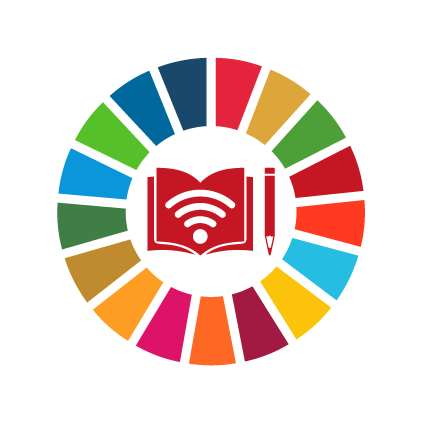Zambia
Background Information
Region
Sub-Saharan Africa
World Bank income group
Lower middle income
Percent of population aged 10-24
34% (UNFPA, 2023)
Total primary school age population (both sexes)
3,759,404 (UIS, 2022)
Total secondary school age population (both sexes)
2,276,319 (UIS, 2022)
Proportion of women aged 20-24 years who were married or in a union before age 18
(% of women aged 20-24)29%
Source: UNSDG , 2018
Adolescent birth rate
(per 1,000 women ages 15-19)135
Source: UN Human Development Reports , 2017
Percentage of women who ever experienced physical violence since age 15
(% of women 15-49)36%
Source: DHS , 2018
Percentage of married women employed in the last 12 months
(% of married or in-union women 15-49)59%
Source: DHS , 2018
Education Snapshot Back to Top
Number of years of free primary and secondary education guaranteed in legal frameworks
(Years)7
Source: UIS , 2022
Percentage of upper secondary schools providing life skills-based HIV and sexuality education within the formal curriculum or as part of extra-curricular activities
Percentage of schools64%
Source: UNESCO , 2017
Proportion of schools with access to single-sex basic sanitation facilities
Percentage of schoolsNo data available
Source: UIS
Women as a percentage of teachers in tertiary education
No data available
Men as a percentage of teachers in pre-primary education
No data available
Expenditure on education as a percentage of total government expenditure
% GDP spent on educationSource: UIS , 2023
Gender parity index for achievement in mathematics, by education level (ratio)
No data available
Gender parity index for achievement in reading, by education level (ratio)
No data available
Proportion of students at the end of primary education achieving at least a minimum proficiency level in reading
-
Female 2%
-
Male 2%
Female: UIS, 2021
Male: UIS, 2021
Proportion of students at the end of primary education achieving at least a minimum proficiency level in mathematics
-
Female 2%
-
Male 2%
Female: UIS, 2021
Male: UIS, 2021
Experiencing bullying in the last 12 months in lower secondary education
No data available
Youth not in education, employment or training
-
Female 36%
-
Male 26%
Female: ILO, 2021
Male: ILO, 2021
Completion rate
Primary school age
-
Female 73%
-
Male 71%
Female: UIS, 2018
Male: UIS, 2018
Lower secondary school age
-
Female 50%
-
Male 54%
Female: UIS, 2018
Male: UIS, 2018
Upper secondary school age
-
Female 27%
-
Male 33%
Female: UIS, 2018
Male: UIS, 2018
Out-of-school rate
Primary school
-
Female 4%
-
Male 18%
Female: UIS, 2019
Male: UIS, 2018
Lower secondary school
-
Female 28%
-
Male 20%
Female: UIS, 2018
Male: UIS, 2018
Upper secondary school
-
Female 61%
-
Male 44%
Female: UIS, 2018
Male: UIS, 2018
Legal Frameworks Back to Top
Presence of legislation on child protection, to prevent corporal punishment in schools
5
Protection from corporal punishment and all violence, including psychological, physical and sexual violence, in educational institutions
Source: HerAtlas , 2019
Presence of legislation protecting the right to education without discrimination based on sex/gender
5
Enshrines right to education without discrimination based on sex/gender for all within the territory
Source: HerAtlas , 2019
Presence of legislation to protect and facilitate education of pregnant adolescent girls
5
Protection of the right to education of pregnant and/or parenting girls
Source: HerAtlas , 2019
Existence of processes to support coordinated action on gender equality in and through education by ministries, civil society, youth organizations and other actors
Data coming soon!
Existence of systematic processes to review and update curricula and learning resources, with a view to eradicating gender stereotypes and promoting gender equality
Data coming soon!
Training on gender-responsive pedagogies is embedded in teacher training programmes
Data coming soon!
Programs Back to Top
Research Project/Report/Study
A school closer to home: using mealtimes to foster language development, improve girls' nutrition and align home and school in rural Kenya and Zambia
Research Project/Report/Study
Bicycles as a Conditional Asset Transfer to Boost Rural Girls’ Education Outcomes and Empowerment
Project/Program
CAMFED Association
Project/Program
Clean Water Wells
Funding Initiative/Portfolio
Community Grants Program
Funding Initiative/Portfolio
Comprehensive scholarship programme
Project/Program
Connect with Respect
Project/Program
Education Endures: Room to Read’s Award-winning Literacy and Gender Equality Interventions During the COVID-19 Pandemic
Funding Initiative/Portfolio
Education Out Loud (EOL)
Project/Program
EMPOWER: Increasing Economic And Social Empowerment For Adolescent Girls And Vulnerable Women In Zambia
Advocacy Campaign/Project
Enough
Project/Program
Food for Education
Funding Initiative/Portfolio
Gender Equity/Education Funding
Project/Program
Gender-Responsive Pedagogy
Funding Initiative/Portfolio
Girl Child Education Fund
Project/Program
Girls' Education Challenge Transition (GEC-T)
Project/Program
Girls' Education Program (Room to Read)
Research Project/Report/Study
GirlsRead! Zambia
Project/Program
Global Programme to End Child Marriage
Project/Program
Grassroot Soccer Curriculum
Project/Program
Keep Girls in School Bursary - Zambia
Project/Program
Leading Community Action for Vulnerable Girls: Young African women at the forefront of COVID-19
Research Project/Report/Study
Saving During Pregnancy in Zambia
Project/Program
Science, Technology, Engineering and Mathematics
Project/Program
Strengthening Opportunities for Adolescent Resilience (SOAR)
Research Project/Report/Study
Tackling School-Related Gender-Based Violence
Project/Program
Technology to Enhance Access to Education & Sexual and Reproductive Health and Rights - Zambia
Research Project/Report/Study
The Effect of COVID-19 on Education in Africa and its Implications for the Use of Technology: A Survey of the Experiences and Opinions of Educators and Technology Specialists
Project/Program
The Virtuous Cycle of Girls’ Education
Project/Program
Transition Guides/Peer Educators
Project/Program
Youth Enterprise
Research Project/Report/Study
Youth Think Tank
Government Programs Back to Top
Project/Program
Adolescent Girls' Programming Community of Practice
Project/Program
Supporting Early Childhood Development Systems - Malawi, Tanzania, Zambia
Project/Program
Second phase of the Girls' Education and Women's Empowerment and Livelihoods for Human Capital Project (GEWEL 2)
Project/Program
The Zambian Girls 2030: Realising My Potential initiative
Project/Program
Girls Education and Women Empowerment and Livelihoods (GEWEL) Project
Network/Convening/Conference
Southern and Eastern Africa Consortium for Monitoring Educational Quality (SACMEQ)
Project/Program
DREAMS
Project/Program
Zambia Education Sector Budget Support Programme
Research Project/Report/Study
Adolescent Girls' Empowerment Program
Project/Program
Zambia Education Enhancement Project ZEEP
Project/Program
Secondary School Bursaries
Project/Program
The Gender-Responsive Pedagogy for Early Childhood Education (GRP4ECE) Toolkit
Funding Initiative/Portfolio
Zambia Rises to Meet the Education Challenges Posed by the Coronavirus
